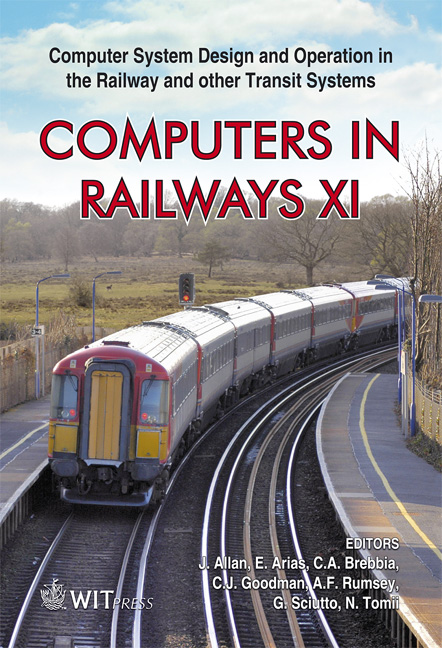Software RAMS: The Opportunity
Price
Free (open access)
Transaction
Volume
103
Pages
10
Page Range
133 - 142
Published
2008
Size
272 kb
Paper DOI
10.2495/CR080141
Copyright
WIT Press
Author(s)
Y. González-Arechavala, J. A. Rodríguez-Mondéjar & G. Latorre-Lario
Abstract
Software is in the heart of many safety critical systems in the railway sector. The development of systems that include software modules requires a correct evaluation of software RAMS (Reliability, Availability, Maintainability and Safety) to get a correct value of the overall system RAMS. In order to obtain appropriate software, the standards propose to perform a set of activities in the different phases of software development as well as tasks to control their correct accomplishment. They ensure the developed software is of adequate quality. However, it is necessary to go further and try to obtain a quantitative measure of RAMS for each software module as is usually done in hardware development. There are several techniques for the assurance of software reliability and safety that have been in use for years and must be analysed to know their real potential: reliability growth models, artificial intelligence techniques, Markov chains, Software Fault Tree Analysis and Software Failure Mode and Effect Analysis among others. Two circumstances emphasize the strategic time the railway sector is living and the opportunity to adopt the most promising software techniques improve reliability and safety: (1) The development of high-performance railway networks that interconnect different countries and the liberalization and opening of the national markets demand new European global agreements. In this regard, the European Railway Agency has asked its Safety Unit to develop the new Common Safety Methods (CSM) and Common Safety Targets (CST) to be used in all European countries; (2) The IEC 61508-3 standard (from which some parts of CENELEC 50128 are derived) is now under revision, with the primary aim of ensuring the safety of the developed software by hardening the requirements and promoting the use of the most promising techniques. Keywords: software safety, software reliability, RAMS, railway standards.
Keywords
software safety, software reliability, RAMS, railway standards.





